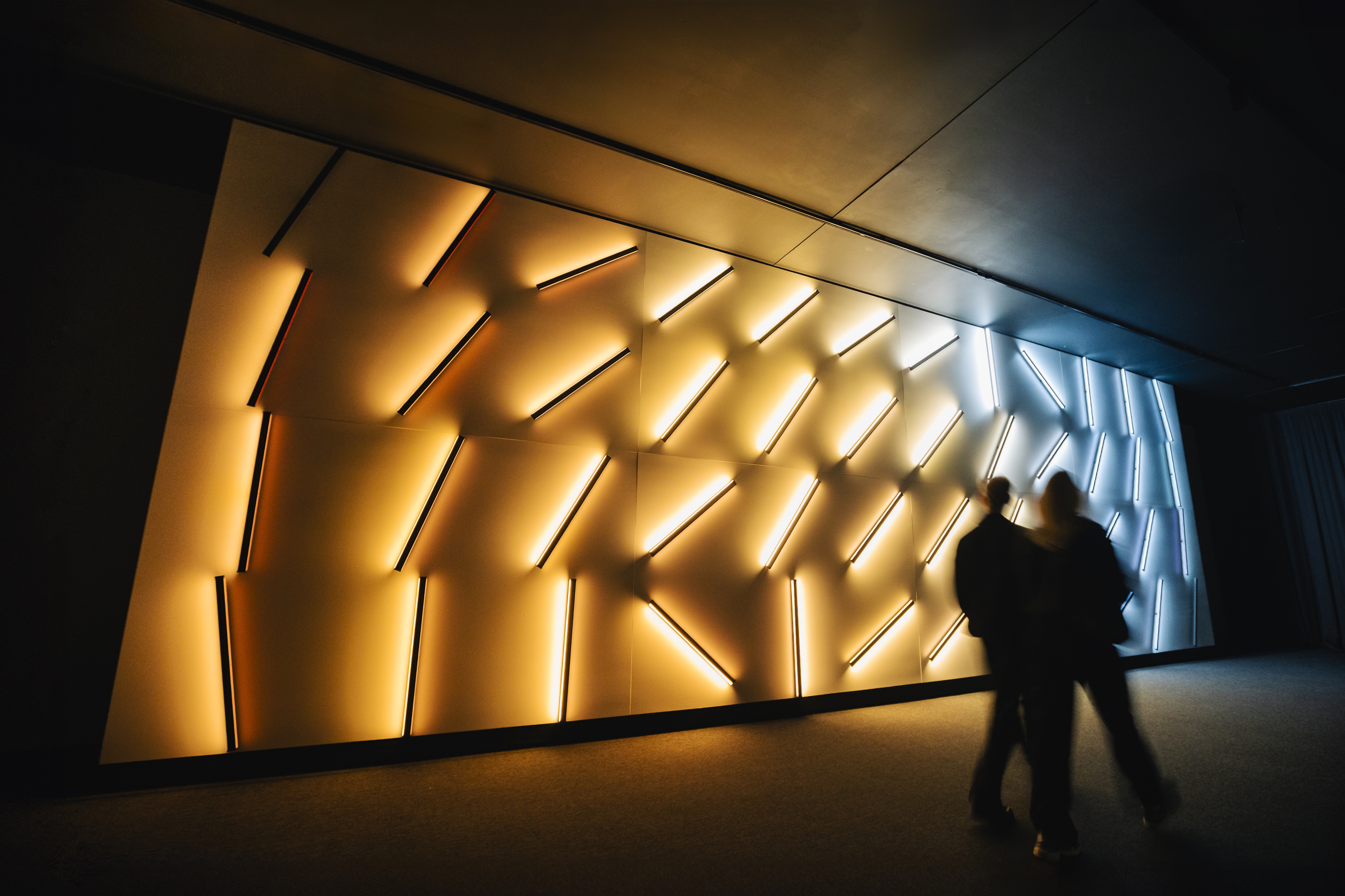F L A U N T

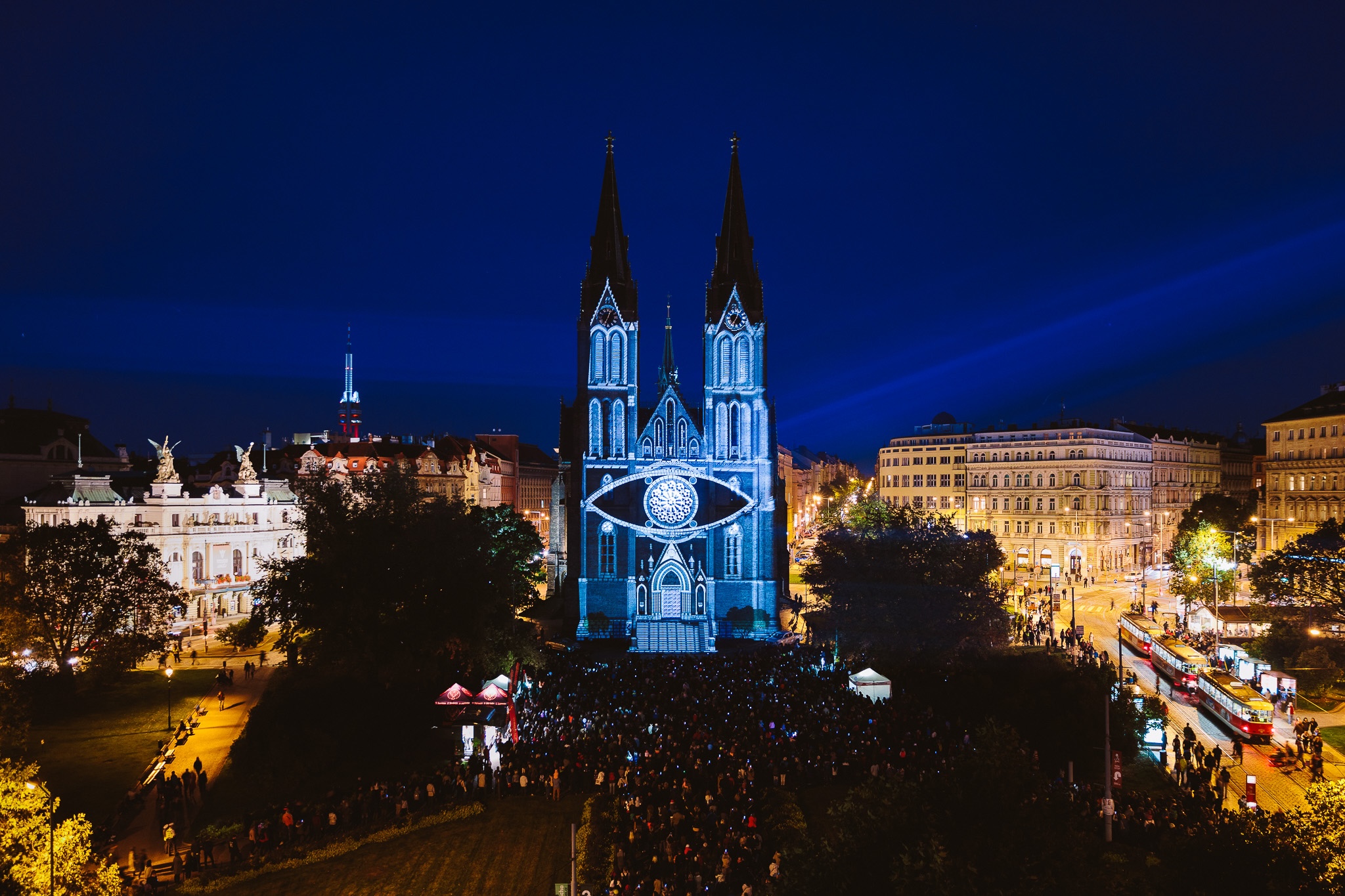
Prague inhabits the long arc of history so completely that time itself is the air you breathe. It can be heavy. Walking its bridges at dusk, or slipping down a cobblestone alley toward a hidden cloister or courtyard, you expect to encounter ghosts, not LED constellations, projection-mapped poetry, and kaleidoscopic lasers refracting in the fog. In its castle galleries and stately museums, there are Old Masters aplenty—and also, impossibly, world-class works of tech-forward immersion.
Romanesque buttresses, Gothic spires, Baroque curls, Secessionist ornament, Communist asphalt, Modernist geometry, Byzantine, Levantine, Iberian, Slavic, and steel-framed glass towers all coexist in Prague in a constant state of palimpsestic ruin and renewal. As the ephemeral Signal Festival unfolds across the city’s storied architecture and riverbanks, and its historic market hall leaps from derelict to the cutting edge, it becomes suddenly clear that this ancient city is actually the most perfect place to host artistry trained on the future.

Signal Festival, now in its 15th year, began not as a civic initiative or an inevitability, but as all the best ideas dow—with a late-night pub conversation. The story may have been burnished in its frequent retelling, but essentially someone in a group of filmmakers and artists said something like, “We should just project our films on that church!” Logistics and politics proved rather too challenging, but the iconic 600-year old Clock Tower overlooking the plaza at the heart of Old Town was right there—ready and willing to be drafted into service. As Founder, Owner, CEO of Signal Space and Signal Festival Martin Pošta remembers that night, “I didn’t even know what projection mapping was at the time. I was a film guy. We got the final hard drive five minutes before launch—I was running around in a panic. And then I saw this elderly man calling his wife saying, ‘You have to see this—you’ve never seen anything like it.’ I almost cried,” he says. “That moment changed everything.”
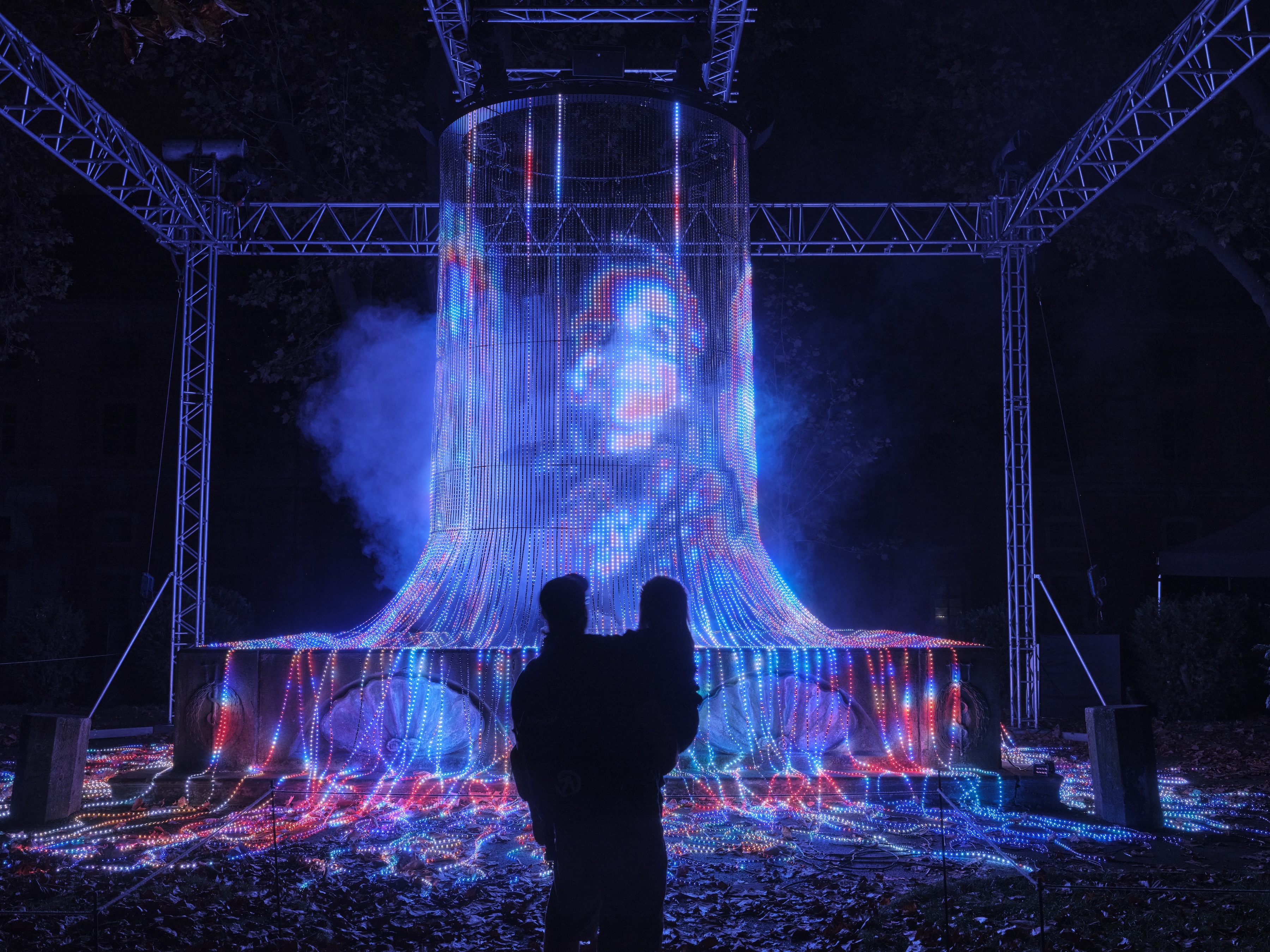
It is tempting to romanticize moments like that, but what came next, and what is coming now, really has changed everything for the city. In the years that followed, Signal Festival expanded with every fresh edition, and has since become the most attended cultural event in the Czech Republic, drawing hundreds of thousands of people out into the streets, parks, courtyards, and riverbanks each year. Families with strollers, teenagers in hoodies, adorable couples, artists with notebooks, tourists who had never heard the word “immersive” before, students with tripods, critics, and skeptics locals—everyone walking and looking, engaged with genuine curiosity.
Cities have cultural physiognomy, and Prague’s is theatrical, ornamental, spiritual, and rigorously structured beneath a blanket of ornament. Projection-mapping on a Renaissance façade does not erase this history—it converses with it directly. Algorithms ripple across edificial tracery like stained glass animated from within. It’s impossible to fully separate the individual works from the overall experience of wandering between the two dozen sites, but some highlights of the 2025 edition, the final chapter of a three-year thematic cycle on ecosystems, included a relentlessly eclectic cohort of works assembled around a theme of ecological stewardship and environmental awareness.

Peppercorns’ Vapor Light over the Vltava in which projected videos were caught in and illuminated from within a vast cloud of mist installed out on the river, visible only from the bridges and riverwalk. It was a mysterious spectacle, but the press of flesh along every possible vantage point proved its concept of making even the citizens of a river-enlaced city see the waterway in a new way. Elsewhere along the route, a corridor of lasers installed in a 13th-century cloister drew a passageway articulating space the way candles once did. In one square, a monumental data-driven image stream evoked water systems and planetary feedback loops—shimmering, granular, geological. On the façade of the Basilica of St. Ludmila, a projection-mapping sequence by V.P.M. unfolded as a kind of visual liturgy, honoring the architecture’s structural rhythm and call to worship, even as it replaced the old gods with new, or with none.
In Riegrovy Sady, Pavla Šceranková’s pendula swung in glowing arcs, like gravity inscribing time into the night air. Co-Vision’s quiet study of the Moravian Amazon unfolded with scientific clarity, allowing ecology to register as a process of patience rather than alarm. And in the former Convent of St. Agnes, the late, great video and installation artist Bill Viola’s Tristan’s Ascension was installed according to his late-career penchant for installing his time-twisting Abrahamic episodes in places of worship—the older and more Catholic the better. As the main, Christ-like figure rose from slumber and ascended in a torrent of water and time—the lone analog filmic image activated the solemnity and stillness of a frescoed moment with operatic, achingly slow ritual—audiences were further reminded that new media has its own art historical roots.
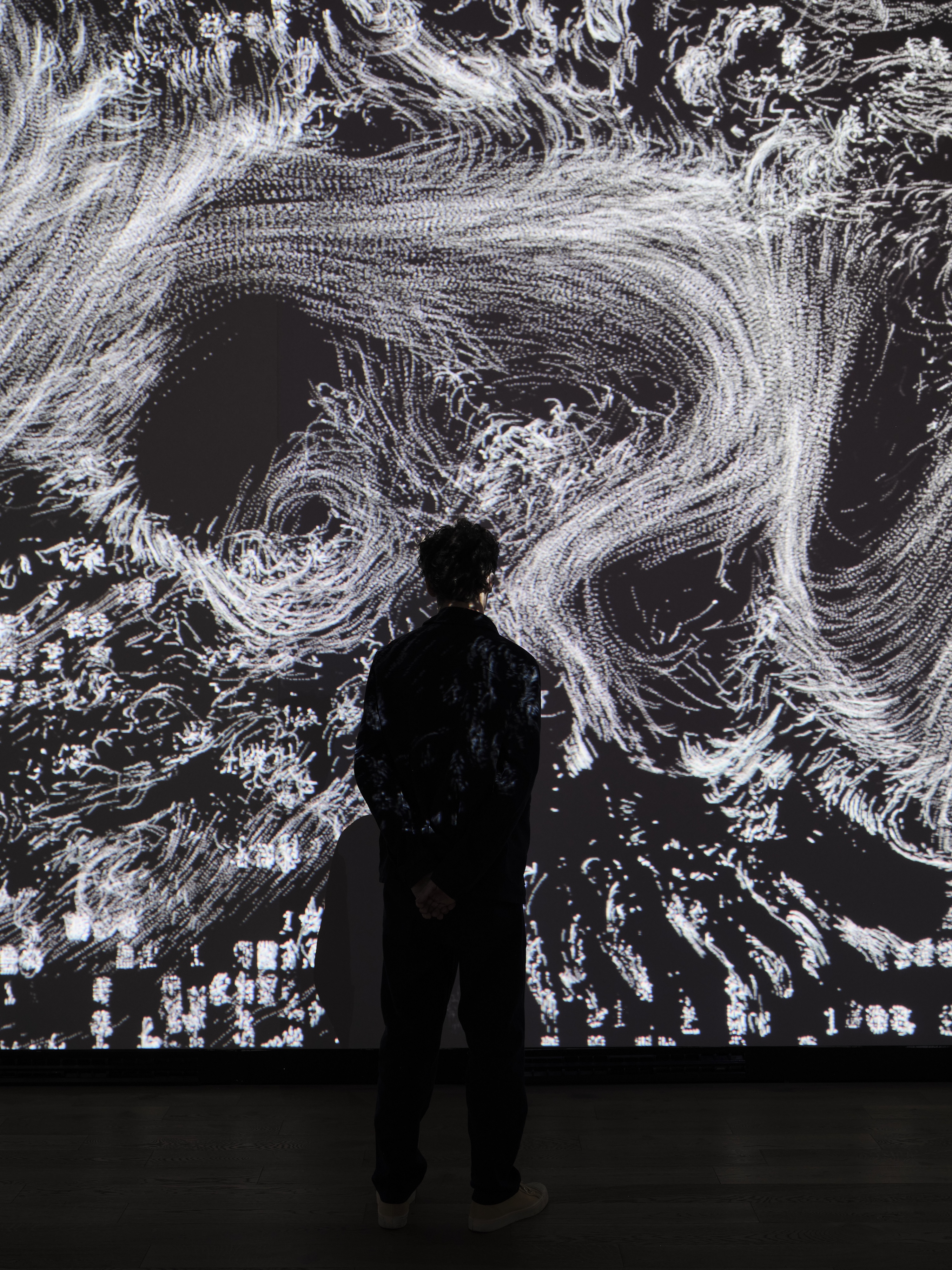
At Old Town Hall, mammasONica’s OVERLɔЯD unfolded as a quiet anatomy of authority. Patterns of information, code, chromatin emotion, and spheres of influence re-formed across the façade with the measured logic of administrative power—bureaucracy appeared not as Kafkaesque (Prague is the only place this term is used correctly) but as something iterative, generative, wild, and musical. A secret courtyard, once the private province of the privileged, played host to a symphony of stage vapors and laser shows that merged the dazzle of psychedelic spectacle with the haunting wonderment of a ghost story. (That was my favorite.)
The overall experience, crucially, does not resolve into a single word like “immersive.” Immersion suggests surrender to a themed environment in a kind of passive narcotic overwhelm. Signal Festival, by contrast, is participatory in both a physical and intellectual sense. The city becomes the gallery, and simultaneously remains itself. It has also brought new energy to Prague’s emerging cultural generation—artists, designers, coders, curators, and young audiences who see in Signal Festival and the newly opened Signal Space a permission structure, a sign that Prague is open to becoming a site of forward-looking experimentation rather than a destination for history alone. And now, for the first time, Signal has a permanent headquarters.
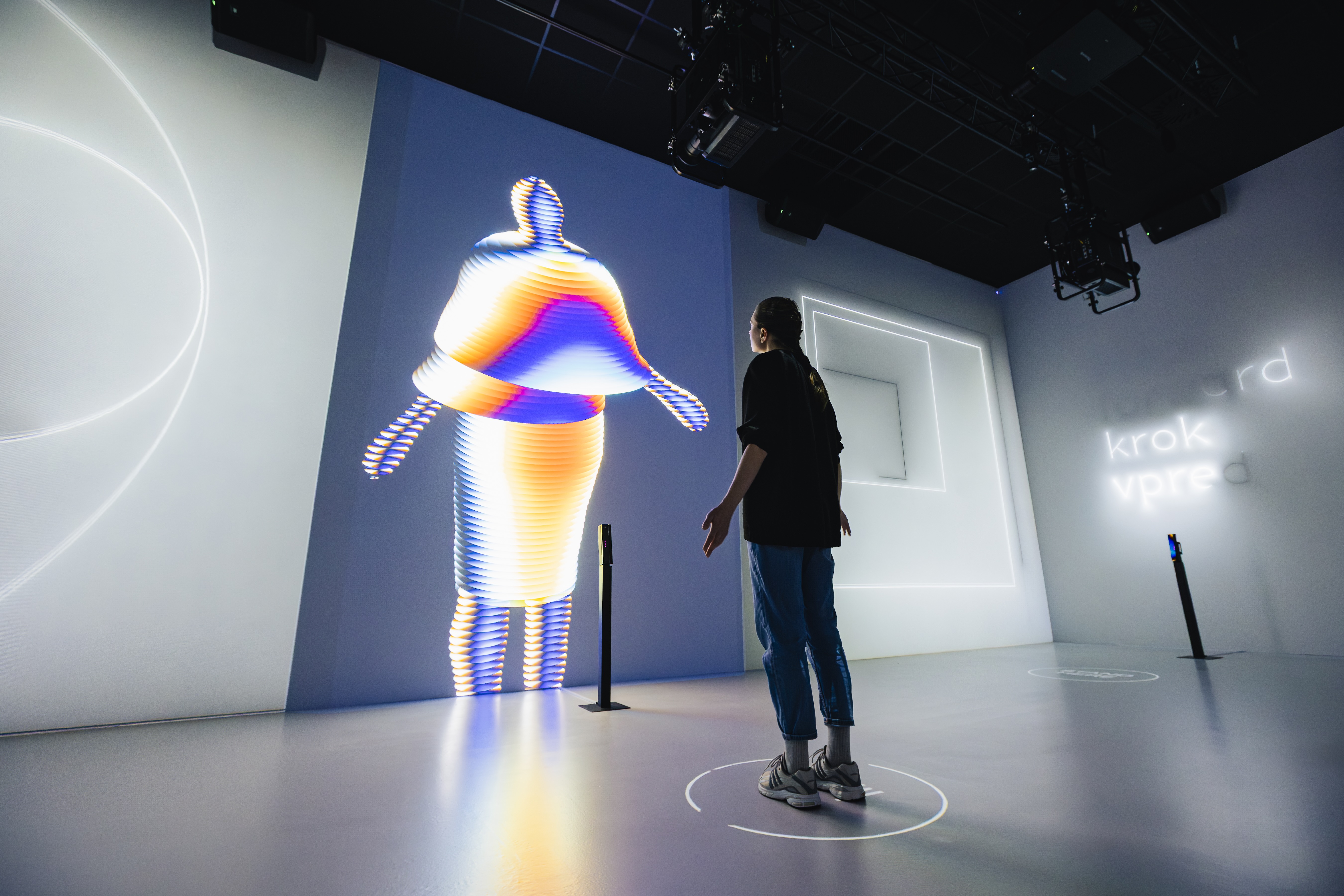
Signal Space, inaugurated during this year’s festival, occupies the former municipal market hall. Built during the Austro-Hungarian era, the building is a triumph of cast-iron rationalism softened by graceful arches and a soaring central nave. Mint-green steel ribs curve overhead, punctuated by ocular windows and clerestory skylights that once flooded the produce stalls below with daylight—a monument to public utility that had fallen on hard times. Reimagining such a structure for contemporary digital art is not merely clever adaptive reuse; it is conceptually aligned. Markets, like museums, are engines of exchange. To that point, the gallery’s inaugural exhibition, Echoes of Tomorrow, sets a contagious tone of optimistic, forward-thinking, research-driven, experimentation—driven by a love affair with both science and art history.
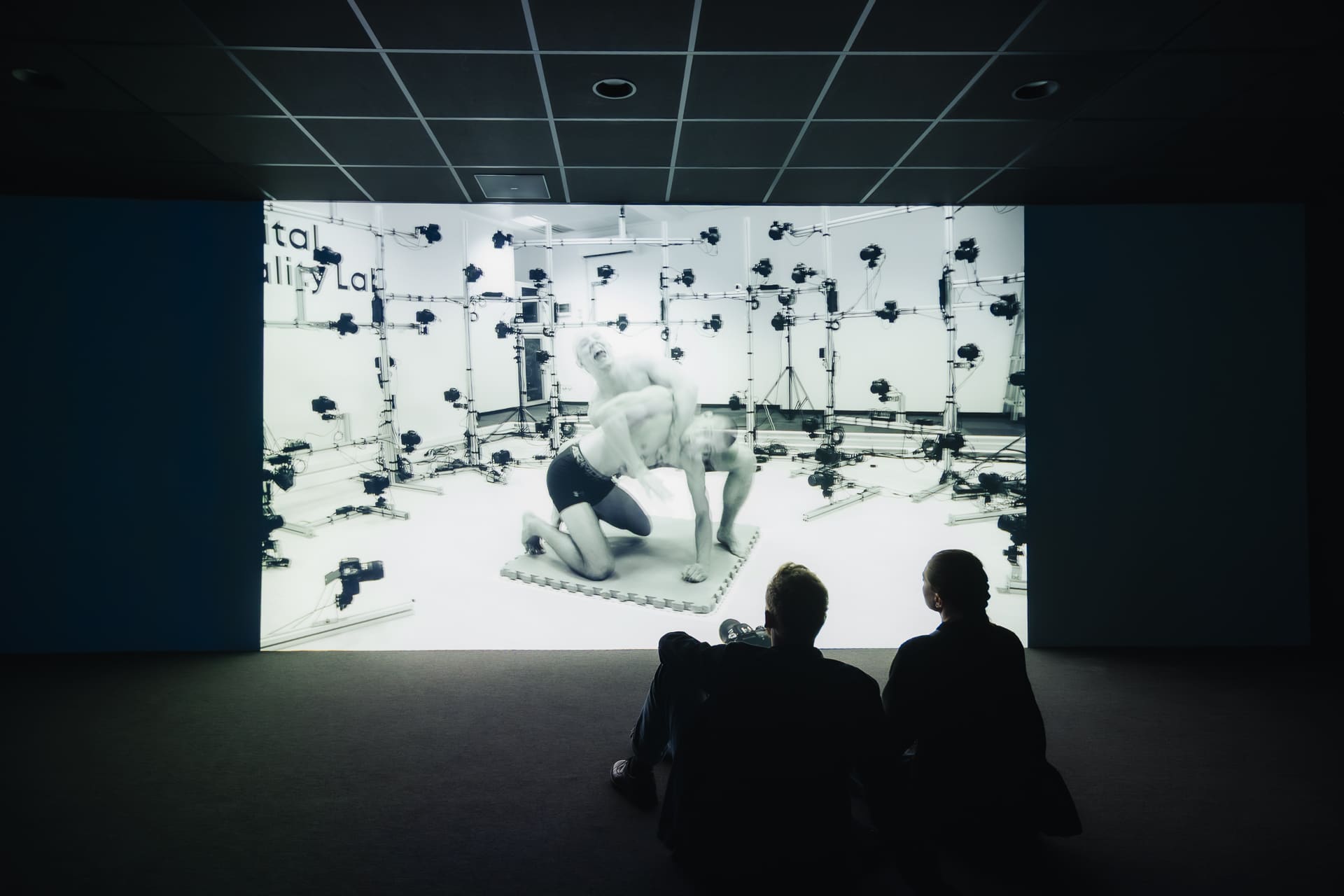
Quayola and Max Cooper’s Fighters makes this romance plain in a visual discourse between Michalangelo, his favorite marble quarry, robotic arms with sculpting chisels, motion-capture video of male wrestlers, the fine dust that clouds as the mechanism does what the titanic artist described—released the figure from within the stone. The collapse of eras along a fusion point of humanity’s quest for beauty and the nature of implementation was a fine synecdoche for the whole undertaking.
Other works of nature-informed beauty were less process-forward, favoring soaring spirit over conceptual rigor; but works like Markos Kay’s biologically inspired, amoebic, botanical, and radiantly anorganic systems generate digital lifeforms that feel neither natural nor synthetic, but sublimely emergent. Onformative’s generative river ebbs and flows at a cartographical pace that invites silky, attentive appreciation—itself a radical gesture these days.

Shohei Fujimoto’s intangible #form uses laser geometry to articulate space with surgical clarity, summoning a kind of Zen mathematics. Zach Lieberman’s responsive sketches translate body to image with the intuitive elegance of calligraphy.
Preciosa’s crystalline pixel constellation refracts light with the quiet authority of Bohemian chandelier logic—the richness of the regional glass tradition hybridized with modular code.
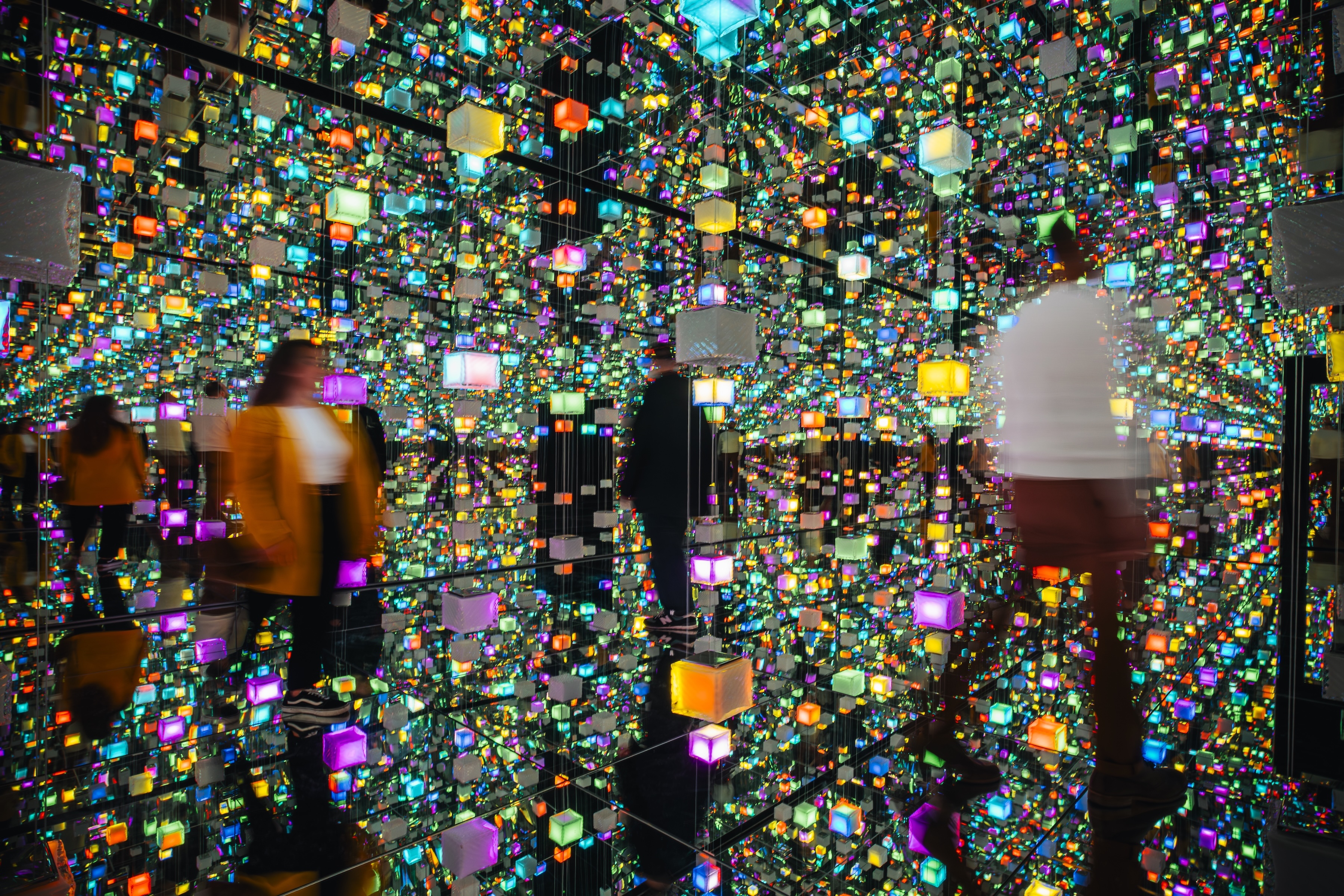
Across these and other enchanting, variously interactive and operatic works from the common run of immersive experiences is that, as Pošta says, “Each work offers a different way of thinking about the future—not as something distant, but as a web of choices, habits, memories, and technological gestures that shape our everyday.”
Visitors respond accordingly. They stand still. They sit on the floor. They speak quietly. They stay longer than they expected to. Pošta, who spent years arguing that digital art deserved a serious platform, reflected simply, “People are smarter than institutions sometimes give them credit for. We didn’t build Signal because digital art needed hype. We built it because the public was ready.”
